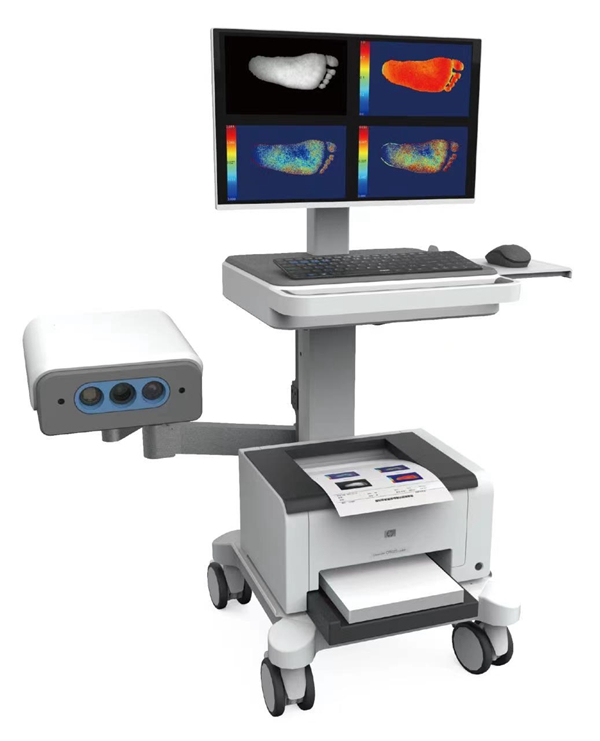
Researchers from the Opto-Electronics Technology Research Center at the Hefei Institutes of Physical Science, Chinese Academy of Sciences, developed a new spectral imaging device called the Tissue Oxygen Imaging System (TOX).
This device allowed for quick and non-invasive detection of tissue oxygen levels over a large area of at least 15cm×25cm. Recently, it obtained official medical device registration certification from the National Medical Products Administration of China.
Tissue oxygen level is an important indicator of tissue health and can aid in the diagnosis and treatment of various conditions. The TOX utilizes spatial frequency domain spectral imaging, a novel technique, to accurately evaluate tissue perfusion. It has shown particular effectiveness in diagnosing diabetic foot, peripheral vascular disease, burns, and skin flap transplantation.
The TOX projects structured light of different wavelengths, modulation frequencies, and modulation phases onto the target tissue. By taking a picture of the tissue's diffuse reflection and using the "three-phase demodulation method," it was possible to figure out how the optical parameters of the tissue are spread out in space. Using the Lambert-Beer rule, it figured out how much oxygen was in the blood by looking at the concentrations of oxyhemoglobin and deoxyhemoglobin. The measurements and images helped doctors figure out how well tissue oxygenation is working.
Clinical research involving 117 subjects confirmed the clinical value of this technology. The Per Protocol Set (PPS) was used as the primary dataset for assessing efficacy, while the Full Analysis Set (FAS) served a supplementary dataset. Statistical analysis showed minimal discrepancies between the FAS and PPS datasets, indicating good detection accuracy of the TOX.
The research team has dedicated significant efforts to biomedical optics research, specializing in extracting weak tissue spectral signals, recovering intrinsic fluorescence spectra, and analyzing multi-spectral data from tissues. It expected that this technology will find more applications and innovative breakthroughs in the future, contributing to healthy aging.
Compared to traditional monitoring methods, this novel tissue oxygen detection technology offers advantages such as high accuracy, fast detection speed, and broad clinical applicability.

Tissue Oxygen Imaging System - 500 (TOX - 500) (Image by ZHANG Yang)